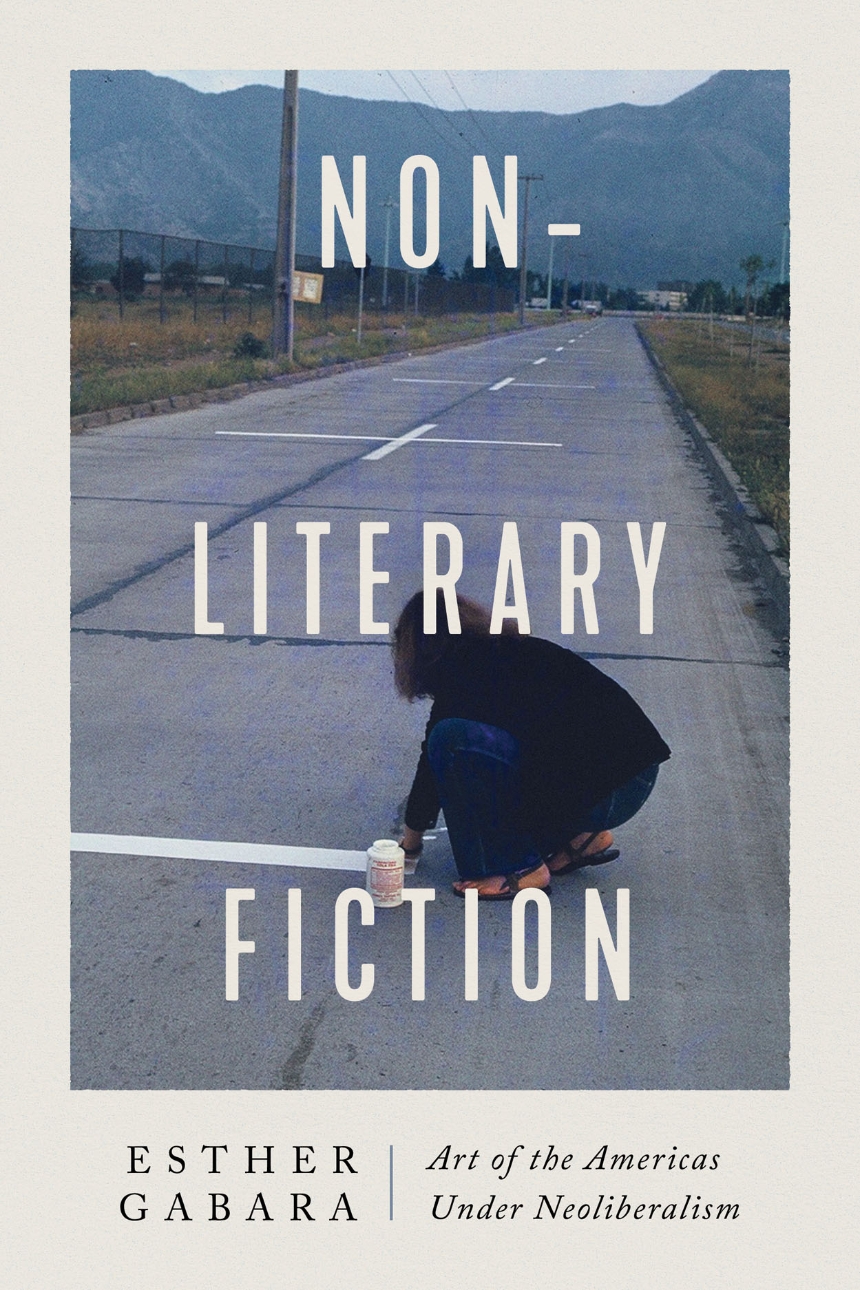Non-literary Fiction
Art of the Americas under Neoliberalism
9780226822358
9780226822365
9780226822372
Non-literary Fiction
Art of the Americas under Neoliberalism
Explores a new form of fiction that emerged in late-twentieth-century visual art across the Americas.
With Non-literary Fiction, Esther Gabara examines how contemporary art produced across the Americas has reacted to the rising tide of neoliberal regimes, focusing on the crucial role of fiction in daily politics. Gabara argues that these fictions depart from familiar literary narrative structures and emerge in the new mediums and practices that have revolutionized contemporary art. Each chapter details how fiction is created through visual art forms—in performance and body art, posters, mail art, found objects, and installations. For Gabara, these fictions comprise a type of art that asks viewers to collaborate in the creation of the work and helps them to withstand the brutal restrictions imposed by dominant neoliberal regimes.
During repressive regimes of the 1960s and 1970s and free trade agreements of the 1990s, artists and critics consistently said no to economic privatization, political deregulation, and reactionary social logic as they rejected inherited notions of visual, literary, and political representation. Through close analyses of artworks and writings by leading figures of these two generations, including Indigenous thinkers, Gabara shows how negation allows for the creation of fiction outside textual forms of literature.
With Non-literary Fiction, Esther Gabara examines how contemporary art produced across the Americas has reacted to the rising tide of neoliberal regimes, focusing on the crucial role of fiction in daily politics. Gabara argues that these fictions depart from familiar literary narrative structures and emerge in the new mediums and practices that have revolutionized contemporary art. Each chapter details how fiction is created through visual art forms—in performance and body art, posters, mail art, found objects, and installations. For Gabara, these fictions comprise a type of art that asks viewers to collaborate in the creation of the work and helps them to withstand the brutal restrictions imposed by dominant neoliberal regimes.
During repressive regimes of the 1960s and 1970s and free trade agreements of the 1990s, artists and critics consistently said no to economic privatization, political deregulation, and reactionary social logic as they rejected inherited notions of visual, literary, and political representation. Through close analyses of artworks and writings by leading figures of these two generations, including Indigenous thinkers, Gabara shows how negation allows for the creation of fiction outside textual forms of literature.
Reviews
Table of Contents
List of Figures
Negating: An Introduction
Chapter One. Line: Making Fiction in Word and Image
Chapter Two. Motif: Recurrent Images of Walking
Chapter Three. Gesture: Signals in Motion
Chapter Four. Corpus: Telling Bodies, Living and Dead
Chapter Five. Color: Taken In by Realism
Epilogue: A Refuge
Acknowledgments
Notes
Bibliography
Index
Negating: An Introduction
Chapter One. Line: Making Fiction in Word and Image
Chapter Two. Motif: Recurrent Images of Walking
Chapter Three. Gesture: Signals in Motion
Chapter Four. Corpus: Telling Bodies, Living and Dead
Chapter Five. Color: Taken In by Realism
Epilogue: A Refuge
Acknowledgments
Notes
Bibliography
Index
